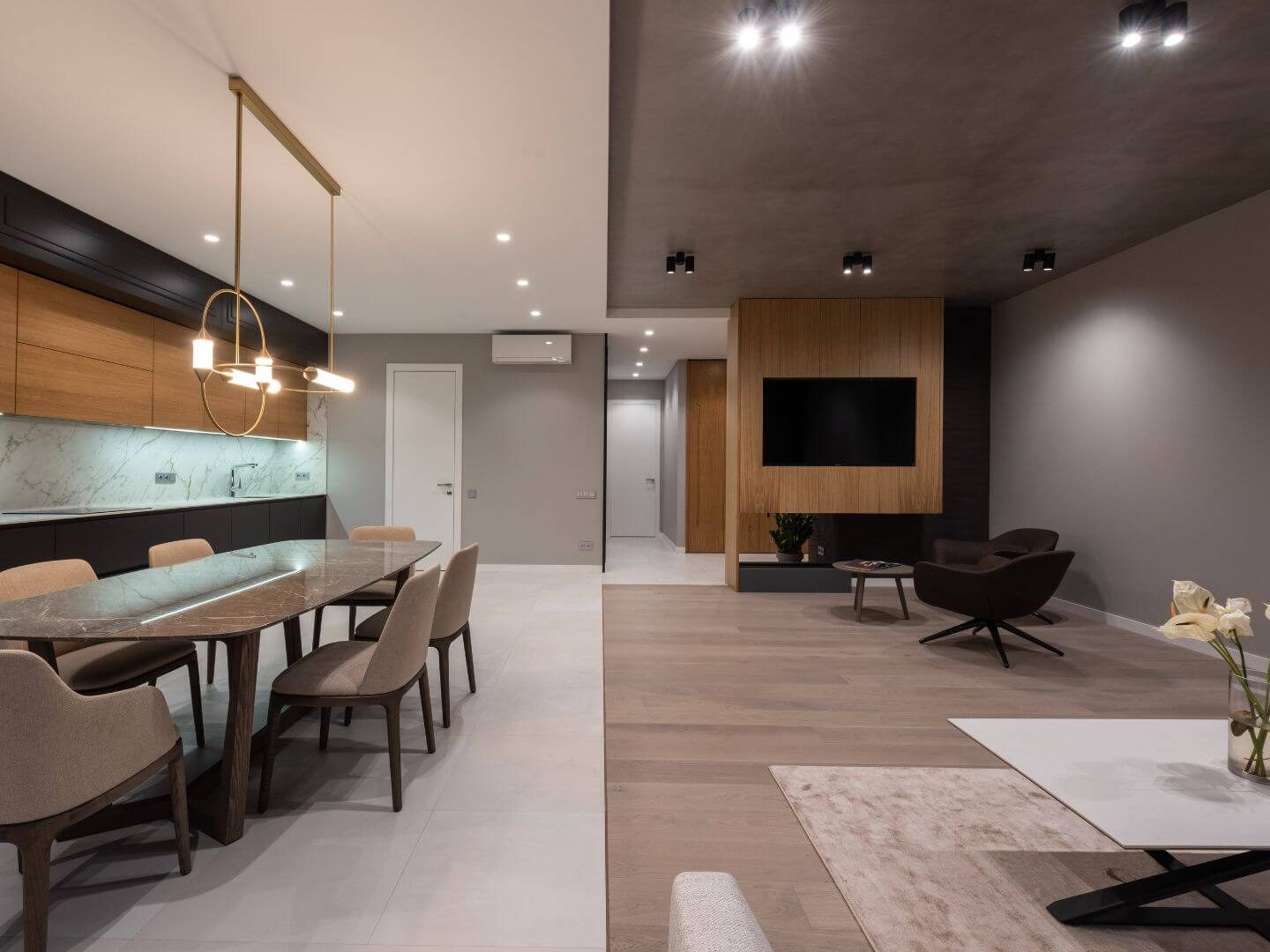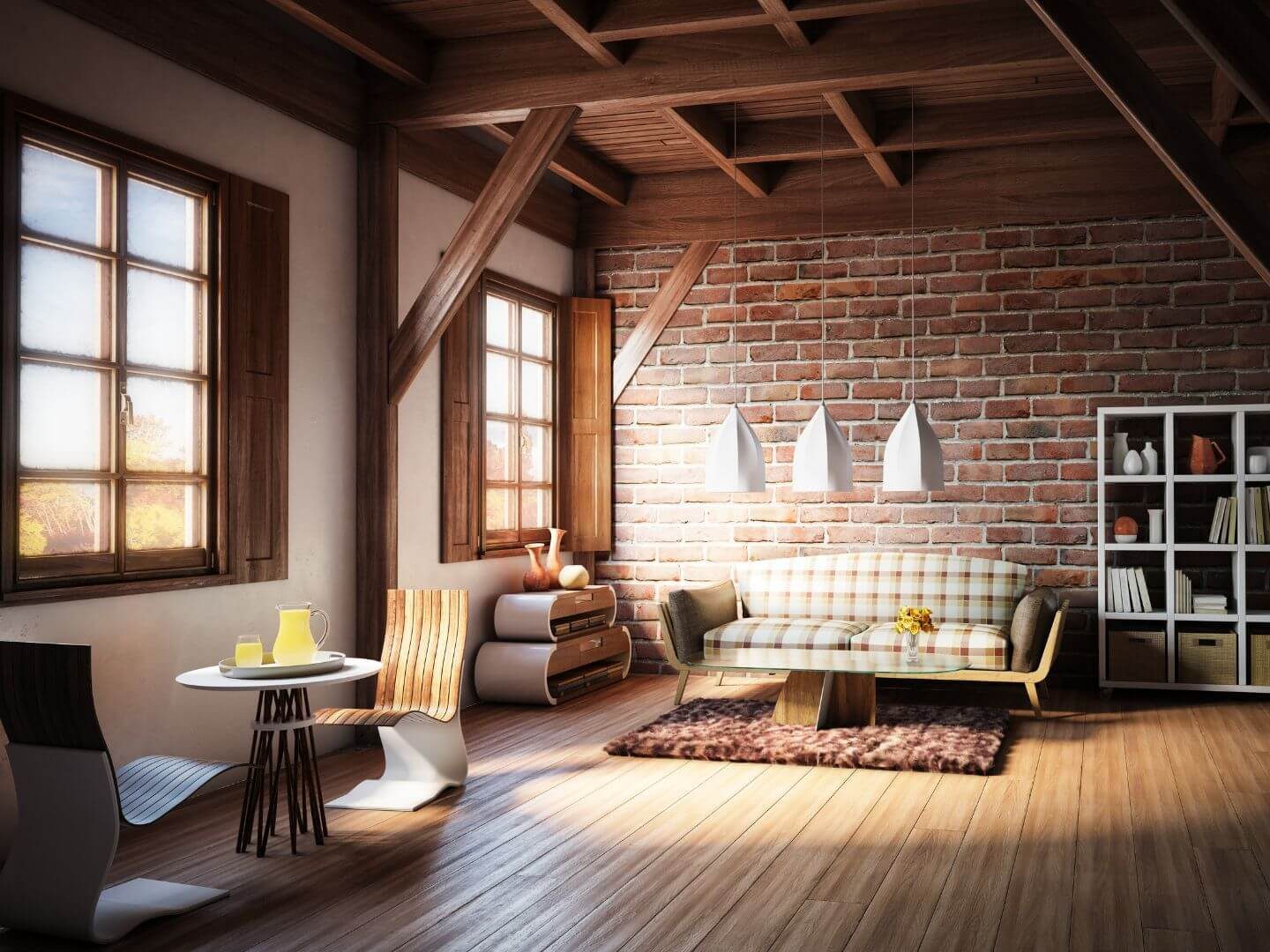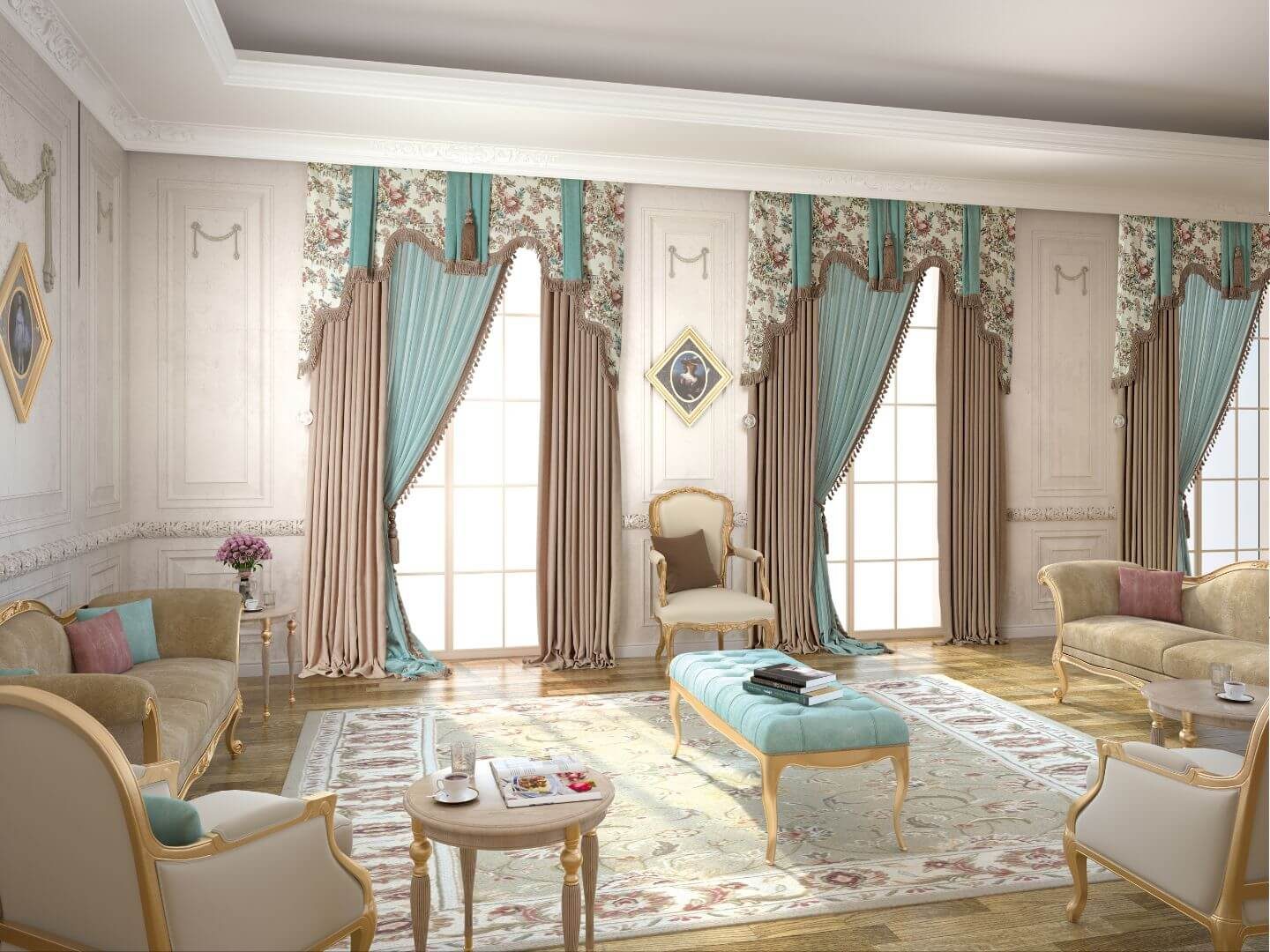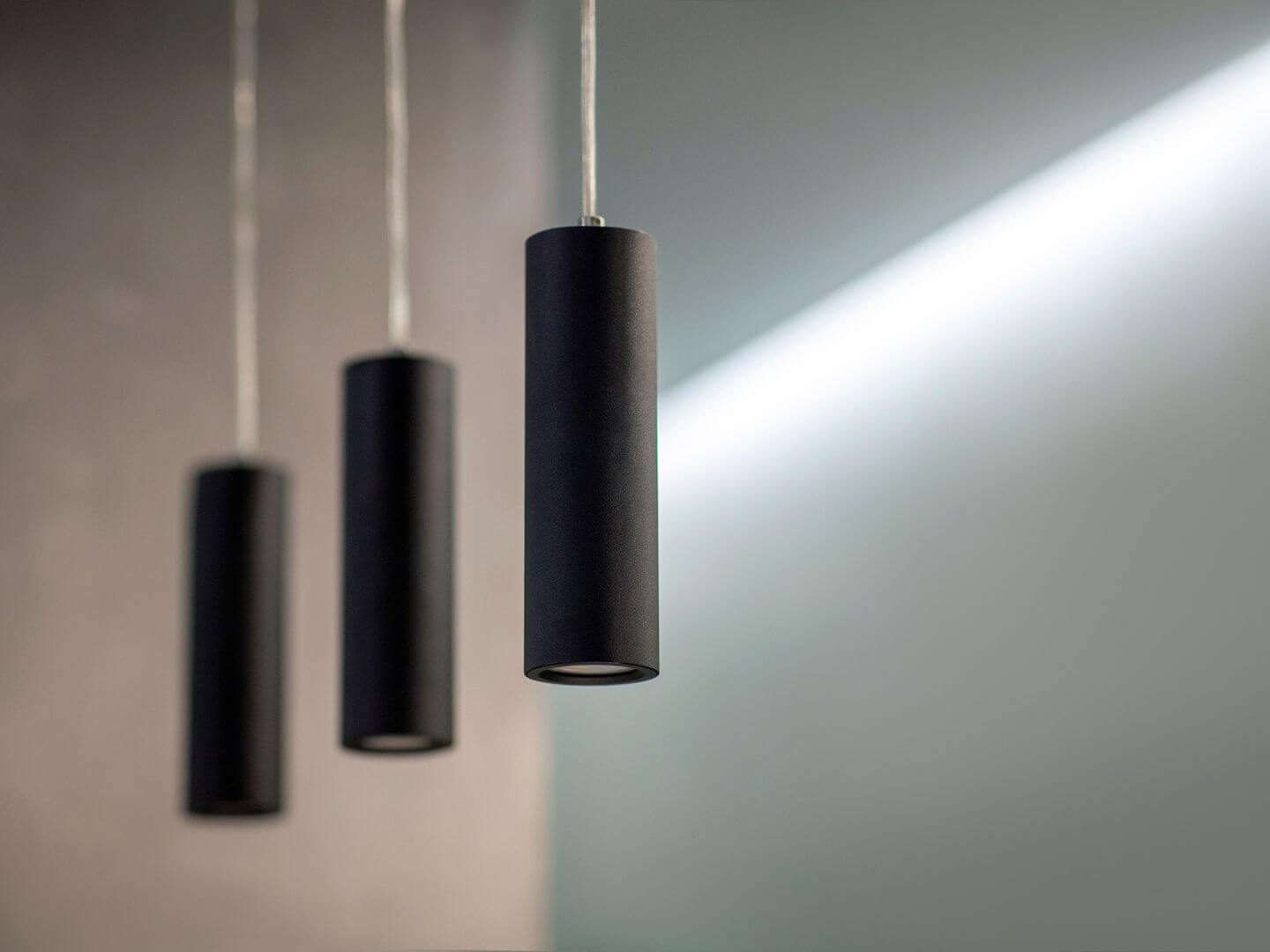The appeal of industrial interior design has increased recently. In addition to its distinctive design, it incorporates the utilitarian and rustic characteristics of industries and warehouses into its interior. Concrete flooring, metal accents, exposed brick, and neutral hues are characteristics of the industrial design aesthetic. Moreover, the use of metal accents in interior design is becoming increasingly popular. They can add a touch of elegance and sophistication to any environment.
Suburbanites, young professionals, and anybody else trying to give their room a bit of an edge seem to choose this design. We’ll look at the essential components of industrial interior design in this post, along with the best 7 industrial interior design tips.
1. Color Combination

The use of complementary colors is crucial in industrial interior design. The neutral color scheme of industrial design is well-known for featuring tones of grey, black, and white. An essential element of industrial decor is a clean, elegant, and modern appearance, which is produced by these colors. However, neutral colors are not the only ones that can be used in industrial design.
Maintaining a balance between neutral colors and other accent colors that can give the room depth and warmth is crucial. Using raw materials in industrial design is one common method of incorporating color into industrial design. For instance, the warm hues of wood can bring comfort to an industrial setting. Because it adds texture and visual interest while preserving the raw and functional appearance of the style, reclaimed wood is a popular material choice for industrial design.
2. Vintage Industrial Interior Design
Any room can benefit from the timeless character and charm that vintage interior design can bring. A room can be given an instant sense of tradition and charm by adding vintage items like old chairs or old posters. At flea markets, antique stores, or online marketplaces, you can find one-of-a-kind vintage items. Wood, stone, and metal are examples of natural materials that are frequently used in traditional interior design.
You can add warmth and texture to your space by adding these materials. Think about incorporating a stone fireplace or a salvaged wood table into your space. You can create an eclectic look by mixing industrial furniture with vintage pieces. For instance, you could incorporate a vintage rug into a modern room or match a classic sofa with a modern coffee table. Think about enhancing your space with antique lamps, vases, or artwork. Both thrift stores and antique stores carry these items.
3. Use of Lighting
Industrial interior design must take lighting into consideration. A space’s mood and ambiance can be improved by using the right lighting, which can also draw attention to significant aspects of the design. In industrial interior design, metal lamps, Edison bulb lighting, and wire cage pendants are common choices for lighting fixtures. These industrial lighting fixtures can provide cozy, ambient lighting while enhancing the room’s overall vintage design.
Another key element of industrial interior design is natural lighting. To create a bright and open environment, large windows and skylights can provide adequate natural light. A very effective way to give a space visual interest is with pendant lighting. Pendant lights can be utilized to draw attention to a particular area, such as a kitchen island or dining table, or to establish a focal point in space.
4. Open Floor Plan

An increasingly common trend in industrial interior design is open floor plan designs. This architectural idea places a focus on expansive areas and a lack of physical partitions between various parts of the house. The following advice will help you incorporate an open floor plan into an industrial interior:
- Walls that divide different areas of the house must be erected as the first step in creating an open floor plan. This can make the space feel more open and spacious by establishing a sense of flow and continuity between various areas.
- Utilize various flooring options: Using various flooring options is one way to define areas within an open floor plan. For instance, you might put hardwood flooring in the dining area and concrete flooring in the living room. This can enhance the design’s visual interest and help to define the different areas of the space.
- Focus on vertical space: In an open floor plan, it’s critical to use vertical space to enhance the design’s visual appeal. To draw the eye up and give the room a sense of height, use tall bookcases, wall art, or statement lighting fixtures.
5. Urban Industrial Design

A common interior design trend, urban industrial design is influenced by the architecture and design of urban areas like factories, warehouses, and industrial structures. This design aesthetic combines elements of modern design with a focus on a raw, unfinished, and feasible appearance and feel. The urban industrial design makes use of exposed structural components like pipes, ductwork, and brick walls.
This can give the area a sense of rawness and authenticity while also paying homage to the past of urban structures. Urban industrial design frequently makes use of elements like reclaimed wood, metal, and concrete. While highlighting the functional aspect of the design style, these materials can give the room a sense of texture and depth. A neutral color palette of greys, browns, and blacks is frequently used in industrial interior color schemes.
6.Rustic Industrial Interior Design

Industrial design’s utilitarian, raw elements are combined with rustic design’s rough, natural elements to create a rustic industrial design. The use of organic and industrial materials together to create a warm, welcoming, and convenient space defines this style. Rustic industrial design frequently uses reclaimed wood decor in its creations. It emphasizes the natural components of the design style while also giving the room warmth and character.
Browns, greys, and greens are common to earth tones in rustic industrial design.
These hues can enhance the natural elements of the design style while also producing a cozy and welcoming atmosphere. Natural textures like leather, wool, and burlap can add a touch of coziness and warmth to the room. Everything from window treatments and upholstery to accent pillows and rugs can use these textures.Industrial design’s utilitarian, raw elements are combined with rustic design’s rough, natural elements to create a rustic industrial design.
The use of organic and industrial materials together to create a warm, welcoming, and convenient space defines this style. Rustic industrial design frequently uses reclaimed wood decor in its creations. It emphasizes the natural components of the design style while also giving the room warmth and character.
7. Warehouse-inspired design
The utilitarian architecture of factories and warehouses serves as the basis for the well-liked interior design trend known as “warehouse-inspired design.” It emphasizes functionality and simplicity and uses a variety of raw, industrial materials like exposed brick walls, concrete, and steel. The raw, unfinished appearance is one of the design’s distinguishing elements, inspired by a warehouse. These design elements—exposed brick, concrete walls, and unfinished ceilings—all define it.
Consider leaving some of these unfinished components exposed if you’re designing a space from scratch. If you’re remodeling an existing space, you can achieve the desired effect by using textured wallpaper or paint that has a natural-looking texture. Furniture with clean lines and a simple design is preferred in warehouse-inspired architecture. Pick items with a functional feel that are made from raw materials, such as steel or reclaimed wood. Metal storage cabinets, vintage industrial worktables, and industrial-style shelving are all excellent choices for this design theme.
Conclusion
Finally, designing an industrial interior requires careful thinking of various factors such as lighting, materials, and layout. By following the best 7 industrial interior design tips, you can create a functional, aesthetically pleasing space reflective of the industrial aesthetic. If you want to transform your space to industrial, look no further than Eric Breuer Interiors. Our team of experts can guide you through the process and help you create an area that is functional, stylish, and reflective of the industrial aesthetic. Contact us today to schedule a consultation and let us help bring your industrial interior design dreams to life!




